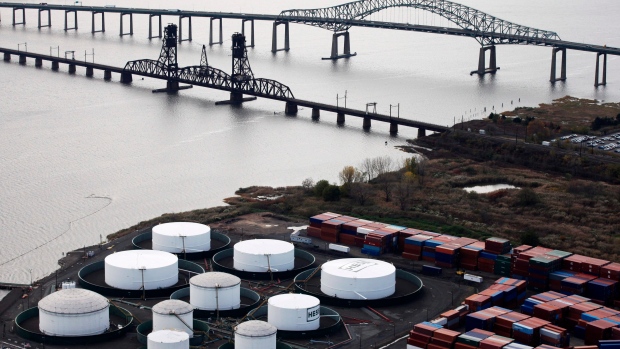Nov 23, 2016
No matter what OPEC does, Canada’s oil sector can prevail

ANALYSIS: The tables have turned dramatically for OPEC since the cartel set out to defend its market share in late 2014.
Two years after starting a price war with the clear intent of driving out growing competition from Russia and the United States – and to a lesser extent, Canada – the Organization of Petroleum Exporting Countries appears on the verge of defeat. The cartel responsible for more than 40 per cent of the global oil supplies is desperately trying to strike an accord among its members to cut production in hopes of sending prices higher, even if it means losing its war for market share.
Unlike the last few meetings – the most recent being in June when cartel members could not even agree on an overall production ceiling – the Nov. 30 gathering is widely expected to achieve results. Helima Croft, global head of commodity strategy for RBC Capital Markets, puts the likelihood of some sort of agreement to cut production at 80 per cent with 50/50 odds of a cut being significant; between 800,000 barrels per day and 1.1 million or roughly equivalent to the current global oversupply.
“The Saudis have essentially bet their reputation on an agreement,” Martin King, energy price forecaster for Calgary-based GMP FirstEnergy Capital said in a report published earlier this week, adding “any kind of agreement” would be better than none at all. “A failure to come up with any kind of agreement (i.e. no overall ceiling) would be akin to total failure and a major psychological blow to the market in the short term.”
Saudi Arabia, OPEC’s largest and most powerful member, will almost certainly herald any agreement as a major victory. Higher prices borne from lower production will allow the Kingdom to avoid further austerity measures and the country will be able to continue funding its ongoing and expensive war with neighbouring Yemen.
The “price war” strategy will appear to have been successful, for a time. U.S. producers have been forced to rein in their production by more than a million barrels per day from the peaks of 2014 and investment in the Canadian oil sands of northern Alberta suffered its steepest two-year drop since data collection began in the 1940s.
Any celebrations among cartel members about having successfully defended their market share, however, will be short lived. Throughout the past two years, OPEC has consistently underestimated both the resilience of North American oil producers ability to cut costs as well as their ability to take advantage of the most advanced extraction technology on the planet to almost instantly respond to higher prices by putting more drilling rigs back into service to capitalize on the upturn.
“A rally to the mid-to-high US$50 per barrel level would… be met with considerable producer hedging pressure and the meaningful ability to ramp up price-elastic U.S. production,” notes RBC’s Croft.
U.S. rig counts have been rising every week for the past two months as prices have risen in anticipation of an OPEC output cut and in Canada, the stars are aligning for a leaner oil sands sector to thrive in what has been dubbed a “lower for longer” environment. Production from northern Alberta is expected to grow by a million barrels per day over the next five years regardless of what happens with prices. Even with the rapidly approaching implementation of a carbon tax in Alberta, TD Securities published a report earlier this week arguing new oil sands investments could be justified despite the tax as long as prices climb above the US$60 per barrel level; which an OPEC cut would likely provide.
THE KEYSTONE FACTOR
Then there is Donald Trump’s surprise victory in the U.S. presidential election earlier this month to consider. Not only does the reality of an incoming Trump administration greatly increase the odds of Keystone XL or another new export pipeline being built in the near future – which would provide a major boost to the realized prices Canadian producers receive and provide them access to some of OPEC’s most cherished Asian markets – but it also represents the clearest possible threat to OPEC’s market dominance.
The U.S. lifted a four-decade ban on exporting domestically-produced crude last year and Trump campaigned specifically on a promise to increase jobs in the oil and gas space. According to the American Petroleum Institute, the U.S. oil sector’s main lobby group, encouraging more exports will create roughly 5,000 jobs in 18 different states by 2020. That would give Trump 90,000 new jobs to boast of just when he will be running for reelection.
It is also important to keep in mind any OPEC agreement to cut production might never actually result in a production cut. Several cartel members have a long history of cheating by producing more than their established quota. GMP FirstEnergy’s King also believes “the agreement will be lacking in individual country quotas” in the first place, and that “this might be the best that can come from the meeting given what still seems to be sharp divisions between cartel members.”
None of that means OPEC will be broadly deemed irrelevant, even if U.S. and Canadian producers are primed to eat the cartel’s lunch regardless of whether it manages to reach a deal. However, there are only so many times the cartel can cry “cut” and have the market believe them.
“I don’t think that OPEC has yet used up all its mulligans,” Mike Tims, vice chair of Matco Investments and a four-decade veteran of global oil market analysis, told BNN via email. “They may not have an infinite number, but hope springs eternal in these matters for at least a little while longer.”


